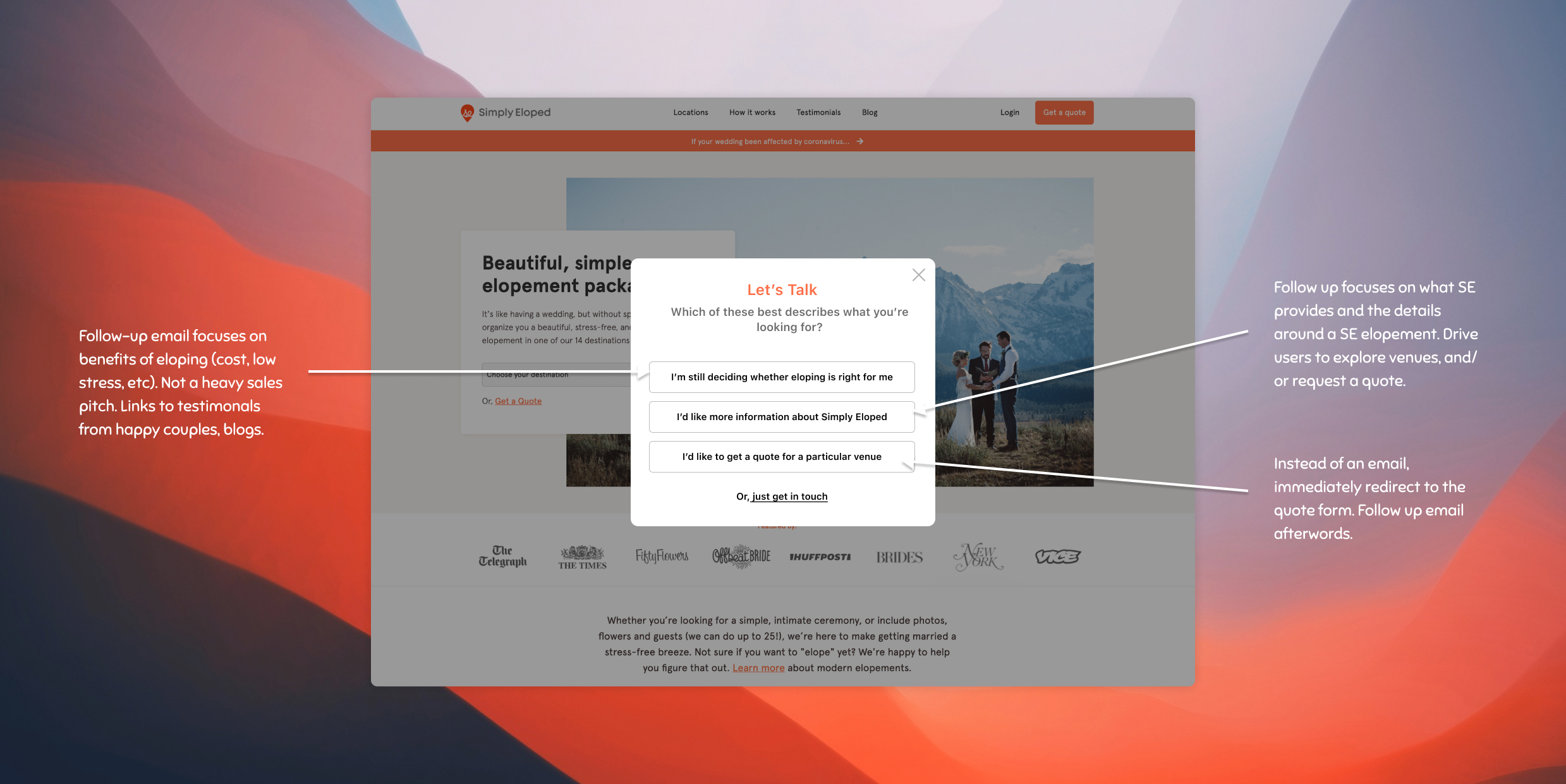There's a certain allure to grand redesigns and sweeping strategy shifts. The new homepage. Big redesigns. But we all have stories of major projects and rebrands that that launched with fanfare and quietly faded months later, either having minimal or negative impacts on the bottom line.
At Simply Eloped, we had the benefit of strong website traffic from prospective couples looking to elope. At least, we thought so. However, despite a high conversion rate on initial contact forms, our ultimate conversion from lead to customer was extremely low. There's always going to be leakage in an acquisition funnel, but we had a massive hole somewhere. Couples who seemed interested were disappearing before taking even the very next next step (much less converting to an actual sale), and it was unclear to the sales team and leadership what was going wrong.
Mapping the process
I began by organizing calls with the sales team to understand how they were interacting with potential customers. I mapped out the entire process of how leads were qualified and looked closely at the automations in place, particularly our automated follow-up/drip campaigns.
It quickly became clear to me that every lead was being treated the same way. Whether someone was casually browsing, exploring elopement as an option, or ready to book immediately, they all received the same messages. The copy positioning in our emails assumed that filling out the form = an interested customer ready to commit, which was probably not true for many visitors. I was hard to be sure, but it seemed likely that this misalignment was creating friction and pushed potential customers away.
A simple test
I wanted a bit more data to back my conclusion here. I designed a new form that would allow us to segment leads into three groups: interested, unsure, and ready for a quote. I was able to get this implemented extremely quickly in production, although it wasn't truly connected to any of our workflows. I set up custom events in Google Analytics track interactions with each option and follow each group through the funnel.

In just a few days, the results were clear. Nearly 40% of inbound leads were not sure if they even wanted to elope yet. Our original lead capture forms did not capture this detail, and the follow-up email cadence assumed a level of commitment that did not exist. As a result, it was likely that couples who needed more info or additional understanding about the process felt pushed towards a "sale" too quickly and dropped out of our funnel.
Tailoring the experience for each segment
We addressed this by sending the "I would like a quote" group directly to a dedicated quote form. This reduced unnecessary steps and made it easier for motivated, high-intent couples to move forward.
For the "elopement curious" group, I designed a new email series focused on education and support. Instead of pushing them to book, we shared information about the benefits of eloping, real couple stories, and answers to common questions. This helped build trust and allowed couples to move forward at their own pace.
We also stored their responses in our database and Hubspot, setting the stage for more personalized campaigns in the future.
The impact on conversions and the sales team
The impact was clear. Drop-off rates decreased significantly, and more qualified leads moved forward in the process. The sales team had better context on each lead’s mindset, which made their conversations more meaningful and effective. Instead of approaching every lead with the same pitch, they could tailor their approach based on each couple’s readiness and needs.
The lesson: Start small, learn fast
What stood out most was not just the improvement in numbers, but the shift in mindset. Instead of assuming we knew what couples wanted, we took the time to ask, listen, and adapt. Rather than jumping into a major redesign or rebrand, we ran a focused, targeted experiment that gave us clear answers quickly.